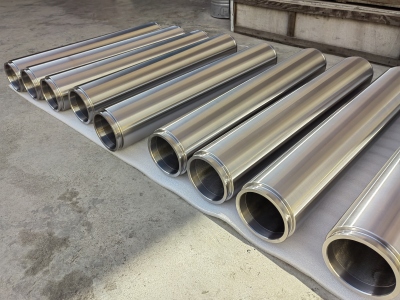Descripción
Scope of supply for Aviation Group
Forgings, round rods, steel plates, rings, seamless pipes, steel plates/steel belts, capillaries, wire welding materials, welcome to inquire!
1. Introduction to Hastelloy B-2 Materials
Hastelloy B2 is a solid solution reinforced nickel-molybdenum alloy that is significantly tolerant to reducing environments such as hydrogen chloride gas, sulfuric acid, acetic acid and phosphoric acid. Molybdenum is the main alloying element that provides significant corrosion resistance to the reducing environment. This nickel steel alloy can be used in a welded state because it prevents the formation of grain boundary carbide precipitation in the welding heat-affected zone.
2. Chemical composition of Hastello B2
| aleación | % | Ni | Cromo Cr | Hierro Fe | Carbono C | Manganeso Mn | Silicio Si | 铜 con | Piedra Mo | Cobalt Co | Fósforo P | Azufre S |
| Hastelloy
B-2 |
Valor mínimo | margen | 0.4 | 1.6 | – | – | – | – | 26 | – | – | – |
| Valor máximo | 0.7 | 2.0 | 0.01 | 1.0 | 0.08 | 0.5 | 30 | 1.0 | 0.020 | 0.010 |
3. Physical properties of Hastello B2
| densidad | 9.2g/cm3 |
| Punto de fusión | 1330~1380 ℃ |
Valor mínimo de las propiedades mecánicas de las aleaciones a temperatura ambiente:
| state | Tensile strength Rm N/mm | Yield strength RP0.2 N/mm | Elongation A5 % |
| Solid melting state | 690 | 310 | 40 |
4. Hastello B2 material characteristics
- Control the minimum content of iron and chromium to prevent the generation of Ni4Mo in β phase
- Excellent corrosion resistance to reducing environment
- Excellent resistance to corrosion of medium concentrations of sulfuric acid and many non-oxidizing acids
- Very good anti-chloride ion reduction stress corrosion cracking (SCC)
- Excellent resistance to corrosion of various organic acids
- Hastelloy B-2 is a face-centered cubic lattice structure.
5. Hastello B2 application field
It has a wide range of applications in the fields of chemistry, petrochemical, energy manufacturing and pollution control, especially in industries such as sulfuric acid, hydrochloric acid, phosphoric acid, and acetic acid. It is not recommended to use in environments where trivalent iron and divalent copper salts exist, because these salts can cause corrosion and damage quickly. When hydrochloric acid comes into contact with iron and copper, it will react with it to form trivalent iron and divalent copper salts.

